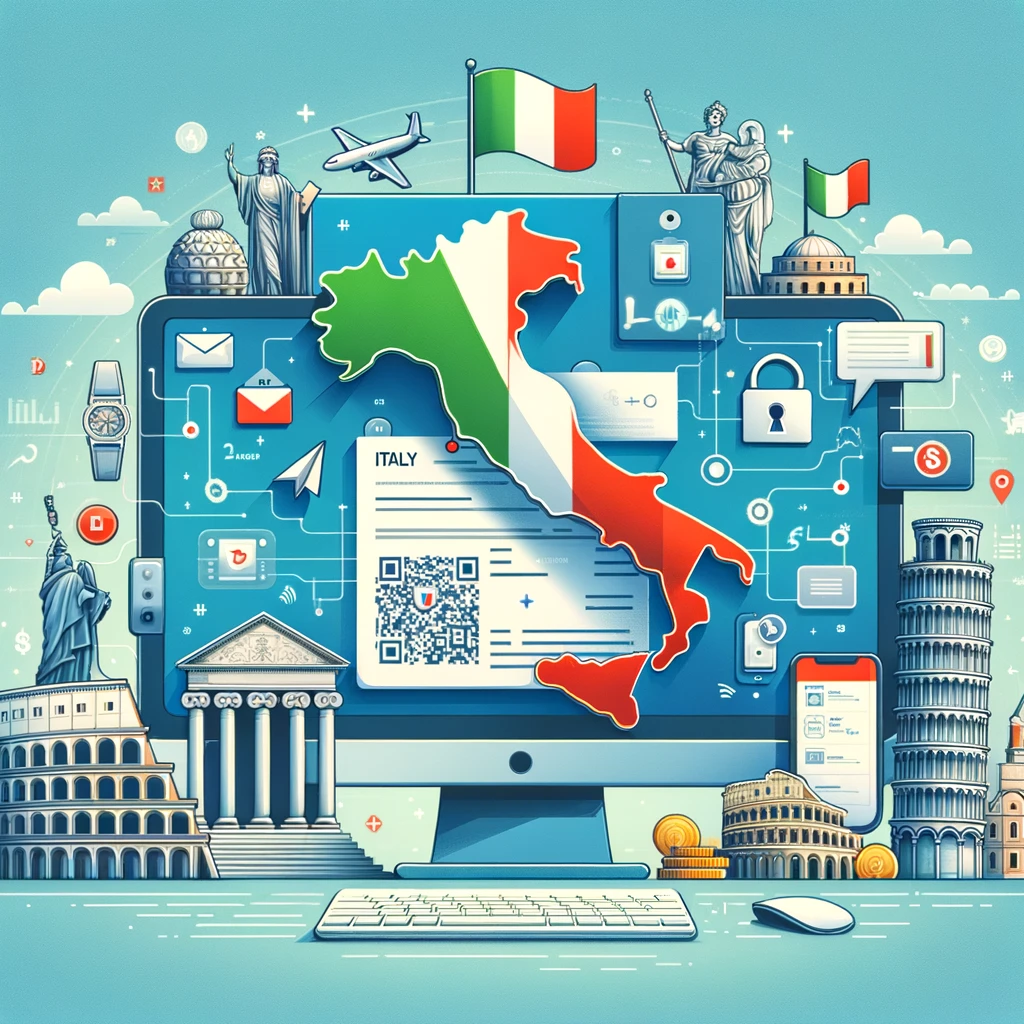Table of Contents
ToggleItaly’s Electronic Invoice Requirement
Italy has made significant changes in streamlining business operations and tax compliance through a mandatory electronic invoice system. This initiative aims to slash administrative burdens, curb tax evasion, and boost tax audit efficiency. For businesses within Italian borders, understanding and complying with this requirement is vital not only for adherence but also for maintaining financial fluidity. Let’s delve into the essential aspects of Italy’s electronic invoice requirement, providing key insights for businesses to stay compliant.

How the e-invoicing system works
The requirement for Italian e-invoicing, sometimes known as “e-invoicing,” is a tax compliance provision that requires the use of digital invoices in all B2B, B2C, and B2G transactions. The legislation was first enacted in January 2019 as part of the Italian Budget Law 2018 (Law No. 205/2017), to reduce tax evasion and improve tax record management efficiency. The technology employed is called the Sistema di Interscambio (SDI), and it functions as an electronic interchange via which all invoices must be transferred. To be valid, an invoice must be prepared using specified XML standards and submitted via this government-controlled infrastructure, guaranteeing that it is quickly shared with both tax authorities and the recipient.
Application Process
The application process is quite simple. Here are the 3 main steps required;
1. Registering for a digital identity code (Codice Destinatario)
- The first step for businesses is to obtain a digital identity code (Codice Destinatario) if they have not already done so. This code is essential for exchanging electronic documents with other entities and the government.
- Businesses can apply for a Codice Destinatario through the Italian Revenue Agency (Agenzia delle Entrate). The application process typically involves submitting relevant business information and completing any required forms or documentation. Don’t forget to apply for a digital signature as well.
- Once the application is submitted, the Italian Revenue Agency verifies the information provided and issues the digital identity code to eligible businesses.
2. Ensuring software compliance
- Businesses must ensure that their invoicing software is capable of generating invoices in the XML format prescribed by the authorities. This may require assessing existing software capabilities or acquiring new software that meets compliance standards.
- Integrating invoicing software with the Sistema di Interscambio (SDI) is crucial for the seamless transmission of invoices. Businesses may need to work with software providers or IT professionals to ensure proper integration and functionality.
3. Transmission of invoices to SDI
- Establishing a secure method for transmitting invoices to the SDI platform is essential to safeguard sensitive financial data. This may involve utilizing secure file transfer protocols (SFTP) or electronic data interchange (EDI) systems.
- Before transmitting invoices to the SDI, businesses should conduct thorough testing to ensure compliance with formatting standards and validate the accuracy of transmitted data.

Importance of compliance with tax regulations
Every business operating in Italy must comply with the requirement for electronic invoicing, including sector entities with revenue. This obligation extends to businesses under the flat rate tax regime. Businesses that choose this method ensure compliance with the Italian tax authority’s initiatives to streamline tax filing and enable faster and more accurate tax audits and refunds. Noncompliance may result in serious consequences, such as fines and the loss of tax deductions for incorrectly issued cross-border invoices. Furthermore, the SDI system increases transparency, minimizing the danger of fraudulent transactions and allowing for a more detailed audit trail.
Implications for Businesses
The transition to electronic invoicing has had a considerable impact on how businesses in Italy send and receive documentation, as well as invoicing reporting systems. Previously, invoices could be maintained and stored on paper, but now they must be digitized and structured according to stringent requirements before being submitted via the SDI system, such as the Fatturapa format. This digital transformation provides for more systematic record-keeping and immediate access to invoice data, which is critical for timely tax compliance and reporting. So besides the address and the fiscal number, every business should be able to provide you an SDI number. As a company, you can still send an electronic invoicing adding a default value such as 000000.
Furthermore, it allows for real-time tracking of invoice statuses, such as acceptance, rejection, or required revisions, along with time stamps, expediting business operations.
Benefits and challenges of e-invoicing
While transitioning to electronic invoices provides many advantages for businesses, it also poses challenges for some despite these benefits. Here are the pros and cons unlocked:
| Benefit | Challenge |
| Digital invoices are processed far faster than paper invoices, resulting in shorter turnaround times and improved workflow efficiency. | Implementation requires cost-effective resources and adequate training. |
| Eliminates the need for physical storage while also lowering printing and postal costs. | Upgrading or integrating existing financial systems with SDI can be complicated and time-consuming. |
| Reduces human errors associated with manual entry. | As invoicing is done online, companies must strengthen their cybersecurity safeguards to protect sensitive information from breaches. |
| Lowers the carbon footprint associated with paper use and trash. |
Penalties for Non-Compliance
Businesses that do not adhere to regulations may encounter repercussions such as fines, disruptions in payment processing, and damage to their reputation with clients and partners because of non-compliant invoicing methods.
Regarding penalties, the Italian tax authorities impose an administrative fine of EUR 2 for each invoice, capped at EUR 400 per month. If the invoice is submitted within 15 days after the deadline, the penalty is halved, with a maximum of EUR 200 per month.
Conclusion
The implementation of electronic invoicing in Italy marks a significant transformation in the way businesses handle their cross-border transactions and comply with tax regulations. Embracing this system is crucial for achieving efficiency, reducing errors, and supporting the government’s efforts to combat tax evasion. Companies operating in or with Italy must adapt to this new model to ensure compliance and optimize their operations. As the digital landscape evolves, staying informed and adaptable will be key to maintaining seamless business practices in Italy’s robust economy.As the digital landscape evolves, staying informed and adaptable will be key to maintaining seamless business practices in Italy’s robust economy. For expert guidance on navigating Italy’s e-invoicing requirements, consider consulting with Accounting Bolla.
Would you like to read more about similar subjects? Then, take a look at our related articles here, Italian freelancer visa: a step by step guide for self empoyed and enterpreneurs, E-invocing in Italy: The ultimate guide to make invoices online and Italy’s New Tax Residence Criteria: What It Means for Residents and Expats.




